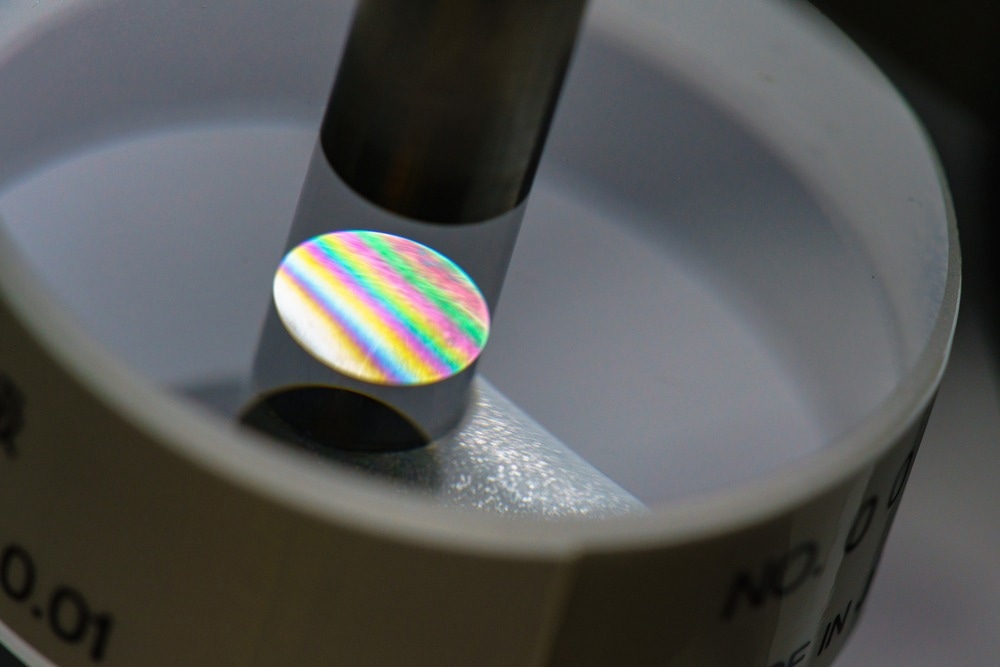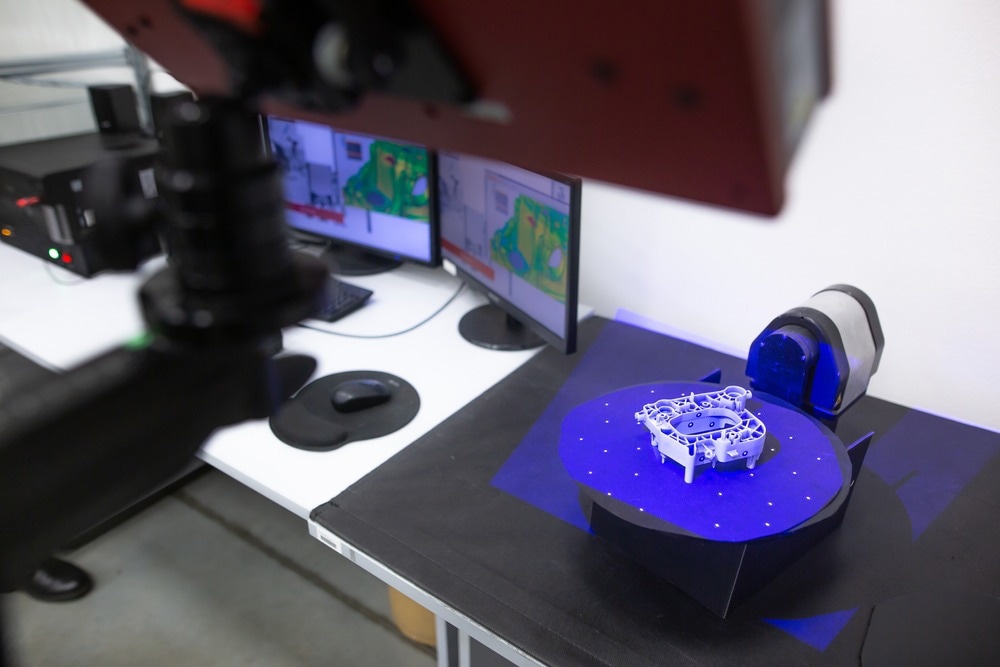This article provides an overview of metrology, exploring its historical roots, diverse techniques, and profound impact on shaping industries and enabling accuracy and precision in various fields.

Image Credit: Kimtaro/Shutterstock.com
What is Metrology: A History
Metrology is the science of the study of measurement and is derived from the Greek words metro (means measurement) and logy (means study). It involves theoretical and practical aspects of measuring, ensuring accuracy and reliability in various industries such as automobile, manufacturing, medicine, and nanotechnology.
The history of metrology can be traced back to the earliest days of human civilization. Early forms of measurement included using seeds, beans, and grains as weights and body parts like the forearm and thumb as length units. As time passed, various societies introduced their measurement systems, such as the Roman uncia and mille and the Anglo-Saxon system in England.
The metric system, introduced by the French Revolutionary government in 1795, offered a logical and decimal-based approach to units of measurement and was solidified as the international measurement standard through the Treaty of the Metre in 1875. This led to the establishment of the International Bureau of Weights and Measures (BIPM) and the refining of measurement methods and standards.
The metric system, now known as the International System of Units (SI), continued to evolve by adding units (ampere, kelvin, and candela) and redefining others (second and meter) to create a modern system reliant on reproducible phenomena.
What is Metrology's Toolkit? - Techniques and Technologies
Optical 3D Metrology
Optical 3D metrology focuses on measuring the properties of objects and light using light as a measurement standard or information carrier. Unlike traditional coordinate measuring machines, optical metrology testing can capture millions of points, enabling the creation of complete digital twins for future analysis and predictive maintenance.
Confocal Microscopy
Confocal microscopy uses lasers and fluorescence to create high-resolution 3D images. It is commonly used in research labs, including in the semiconductor industry and life sciences, especially for studying live cells.
Acoustic Metrology
Acoustic metrology is a widely used technique in subsea operations for obtaining accurate measurements when connecting subsea structures and pipelines. It involves using acoustic equipment, supported by offshore survey contractors, to determine hub-to-hub range using long baseline (LBL) techniques.
Additional surveys, including pressure/depth measurements and using subsea gyros and instrumented transponders, provide information about hub depths and attitudes. The adaptability, redundancy, and quick processing time of acoustic metrology enable pre-planned arrays and results to be referenced to an absolute datum.
Scanning Probe Microscopy
Scanning probe microscopy is a metrological technique to study and manipulate nanoscale surfaces and structures. It employs physical probes, such as atomic force microscopy (AFM) and scanning tunneling microscopy (STM), to scan and collect data from the sample surface.
These techniques offer high-resolution imaging and surface profiling, providing valuable information about the surface's topography and properties.
Stylus Profilometry
Stylus profilometry is a common metrological technique for measuring surface texture. It uses a probe to physically scan the surface and detect height variations and a feedback system to maintain a specific torque on the probe, allowing surface reconstruction based on position changes.
What is Metrology's Role in Ensuring Precision and Quality in Manufacturing Processes?
Metrology is essential in manufacturing for two key purposes: calibration of machinery and tooling before production and verification of parts after production. It ensures accuracy and precision in part manufacturing, helps maintain specific tolerances, and identifies any adjustments needed in the manufacturing process.
As manufacturing technology advances, precise measurements become increasingly important for medical and aerospace industries to achieve superior parts with high-quality surface finish and material properties.
What is Metrology Testing in Manufacturing?
Metrology testing verifies the accuracy of machined parts on a global scale. It ensures that parts align with measurement drawings, accommodate different measurement systems, and meet international standards.
Any measurement deviations can be detected and corrected by maintaining the calibration of inspection tools. This process enables manufacturers to produce accurate and precise parts that meet industry standards and accuracy requirements.

Image Credit: Simon Kadula/Shutterstock.com
What is Metrology Used for in the Automotive Industry?
The automotive industry has embraced optical 3D metrology for improved quality, productivity, and cost-effectiveness. This technology enabled precise measurements of complex parts, accelerating production processes. It has replaced traditional fatigue and crash testing tools, integrates seamlessly into existing facilities, and is favored by BMW, Porsche, Volkswagen and Audi.
Optical 3D metrology also enhances the manufacturing of shock absorber pistons and facilitates design, simulation, and analysis processes. It detects abnormal component behaviors, aiding in root cause investigations and iterative product development.
What is Metrology's Impact on Nanotechnology?
Metrology plays a crucial role in the advancement of nanotechnology, as it enables accurate characterization and evaluation of nanomaterials. Nanomaterials have unique properties due to their nanoscale dimensions, and understanding their size, shape, and physical properties is essential for developing reliable nanodevices.
Nanoscale metrology testing, facilitated by advanced instruments like scanning probe techniques, electron beam techniques, and optical tweezers, finds applications in various scientific fields, including biology, medicine, and environmental science. It allows researchers to explore new applications and harness the potential of nanomaterials for innovative advancements.
Mechanical nanometrology combines AFM indentation and nanoindentation measurements, allowing for the precise measurement of elastic and plastic properties of small volumes of materials. It is instrumental in determining mechanical properties such as hardness, modulus, creep, and visco-elasticity of nanosized elements in materials or coatings.
What is Metrology Going to Look Like in the Future?
With the continuous progress of technology, metrology testing will play a vital role in various industries and scientific disciplines, driving sustainable improvements and ensuring reliable measurements.
3D measurements will become commonplace, enabling real-time corrections and optimization during manufacturing. Quality control managers will face new challenges but also benefit from detailed data provided by advancements in 3D measurement technology. The future of metrology holds great promise for improving quality, streamlining processes, and facilitating data-driven decision-making.
References and Further Reading
Akdogan, A. (2018). Introductory Chapter: Metrology. InTech. doi.org/10.5772/intechopen.75541
Axsom, T. (2022). What is Metrology? [Online]. Fictiv. Available at: https://www.fictiv.com/articles/what-is-metrology
Bruker. (2023). What is an SPM? [Online]. Bruker. Available at: https://www.bruker.com/en/products-and-solutions/microscopes/materials-afm/what-is-an-spm.html
Fanton, J. P. (2019). A brief history of metrology: past, present, and future. International Journal of Metrology and Quality Engineering, 10(5). https://www.metrology-journal.org/articles/ijmqe/full_html/2019/01/ijmqe180023/ijmqe180023.html
GOM. (2022). 3D Technologies for Research and Development in Car Production. [Online]. GOM. Available at: https://www.gom.com/en/solutions/automotive/development-and-prototyping
GOM. (2022). Automotive Testing: Optical 3D Metrology Improves Safety and Comfort. [Online]. GOM. Available at: https://www.gom.com/fileadmin/user_upload/industries/automotive-testing_EN.pdf
IMCA. (2014). A Comparison of Five Main Metrology Techniques in Use Today. [Online]. IMCA Guidance on Subsea Metrology. Available at: https://www.hydro-international.com/
Jamakhani, M.A. et al. (2011). Nanometrology in biological and medical sciences. International Journal of Advanced Biotechnology and Research, 2(1), pp. 213-223.
Michael Berger. (2011). Nanometrology - A Key Aspect of Developing Nanotechnologies. [Online]. Nanowerk. Available at: https://www.nanowerk.com/spotlight/spotid=20923.php
Nanoscience Instruments. (2023). Profilometry. [Online]. Nanoscience Instruments. Available at: https://www.nanoscience.com/techniques/profilometry/
St. Croix, C. M., Shand, S. H., & Watkins, S. C. (2005). Confocal microscopy: comparisons, applications, and problems. Biotechniques, 39(6), pp. S2-S5. https://www.future-science.com/doi/10.2144/000112089
Disclaimer: The views expressed here are those of the author expressed in their private capacity and do not necessarily represent the views of AZoM.com Limited T/A AZoNetwork the owner and operator of this website. This disclaimer forms part of the Terms and conditions of use of this website.